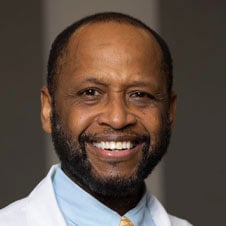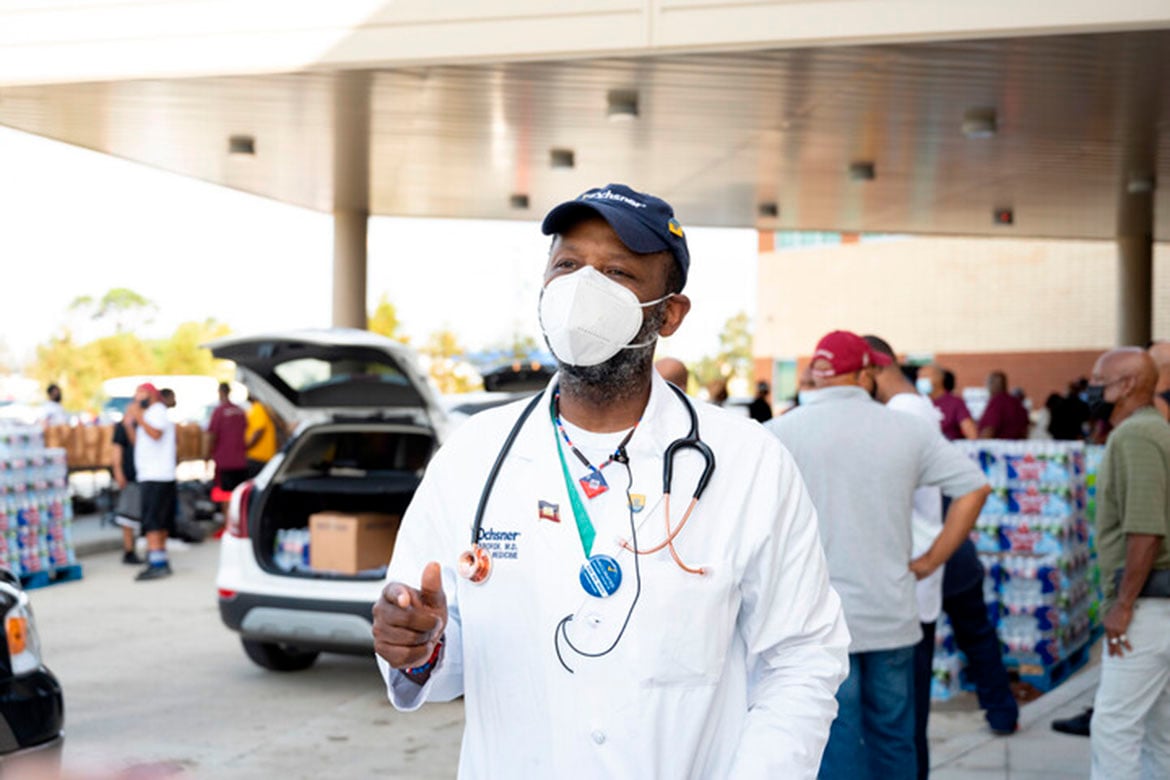Four years ago, Yvens Laborde, MD, began his position as medical director of global health education and director of public health at Ochsner Health by giving a grand rounds presentation entitled “Global Health is Local Health.”
His presentation raised the point that “diseases do not respect borders,” and he cited the modern examples of infectious diseases such as H1N1 influenza, HIV/AIDS, and Ebola, as well as other conditions such as cardiovascular diseases, diabetes, obesity and others.
Later that day, as if to reinforce the theme of Dr. Laborde’s presentation, the World Health Organization declared the COVID-19 outbreak as a public health emergency of international concern.
He was soon thrust into a new role: Leading the New Orleans-based health system’s work group for equitable vaccine distribution and COVID-19 testing.
Ochsner Health is a member of the AMA Health System Program, which provides enterprise solutions to equip leadership, physicians and care teams with resources to help drive the future of medicine.
The COVID-19 pandemic exacerbated and exposed Louisiana’s existing health care inequities in the same way that Hurricane Katrina had done 14 years earlier. When a national annual report named Louisiana the worst state for health outcomes, Ochsner launched its $100 million “Healthy State” initiative and created the post of chief community medical officer. Last fall, the system’s leaders selected Dr. Laborde to be the first physician to fill that role.
During a recent interview, Dr. Laborde—an internist originally from Port au Prince, Haiti—discussed his new position and how he will prioritize the health challenges Louisiana faces.
AMA: How did the chief community medical officer position come to be, and how did you become the first person to fill it?
Dr. Laborde: The position aligns with Ochsner’s strategy to prioritize the structural drivers of poor health in the communities that we serve and health equity—and the COVID pandemic made it absolutely clear that these had to formally become a strategic focus for the institution.
And it became apparent that community health is critical to ensure that we promulgate our mission, which is to serve, heal, lead, educate and innovate—both locally and globally. And there was the realization that there's a critical need to have a key leadership role to fulfill that mission.
My trajectory and history at Ochsner made me a natural candidate to fulfill that role—given my long history at Ochsner within that space—having done my residency and my training here and given the multitude of roles that I’ve held with community responsibilities. I was the first Black doctor elected to the Ochsner board of medical directors in 2006, where I was instrumental in advocating for our communities’ post-Katrina recovery.
AMA: The job description for your new role is quite varied. It sounds like you’re serving as equal parts physician, educator and community liaison.
Dr. Laborde: Yes, I'm a board-certified internal medicine physician and I still practice clinically, and I also teach our residents and students.
Like any large academic medical center, Ochsner has three strategic pillars: academics, research and clinical practice. But people have realized that community also has to be one of those critically important pillars.
So, in terms of this role we created, it made sense to have somebody oversee this community pillar who can align and demonstrate—based on both experience, knowledge and capability—how those four pillars intertwine and should always be mutually reinforcing.
AMA: Please describe Ochsner’s community partners and your role in coordinating activities with them.
Dr. Laborde: We've gone through a transformation—or an evolution—about making this distinction between health care and health and well-being. We have realized that when we focus primarily on health care, that focus is on what we do within the walls of the hospital and clinic.
There was a study done by the Institute of Medicine [now the National Academy of Medicine] that demonstrated that, if you look at the total health of an individual, 80% of their health outcomes are predicated by nonmedical or non-health care-related factors like lifestyle, behaviors, food security, income, housing, transportation and other socioeconomic and environmental factors
So, in order to improve an individual’s overall health, you have to engage with the community because in essence that's where an individual's health and well-being begins.
Some of the strongest community partners that we have, which we used quite tremendously during COVID, are our faith-based partnerships, businesses, city and state agencies, our schools, universities and nonprofits We make it a point to identify both faith- and other community-based organizations that are within the reach of our different clinics and our hospitals and then try to partner with them to execute what I like to describe as “community-led” partnerships and solutions.
We try to ensure that we provide them with resources, but we also take more of a humble approach and have them educate us on identifying community challenges, and partner with them in co-creating solutions to addressing those.
AMA: Why is health equity such an important part of your new position?
Dr. Laborde: It's critically important. And [AMA Chief Health Equity Officer] Dr. Aletha Maybank is an excellent colleague who I've consulted with quite a bit.
Based on the definition of health equity as assuring that everyone has a fair and equal opportunity to achieve their optimal health is central. You can't achieve health equity if you don't address the disparities that exist. And a significant number of disparities arise as a result of long-standing neglect of minoritized and underserved communities.
For me to be effective in my role to achieve what we describe as a “healthy state” can't happen in the absence of equity. We must acknowledge it in order to inspire healthy lives and better communities.
Here in Louisiana, there's a lot of inequity between rural and urban communities. Even right here in New Orleans, just within three to five miles of certain neighborhoods, you can find as much a 25-year life-expectancy difference.
And so, one of the critical aspects of my role, given the impact and the size of Ochsner as an anchor institution, is to understand what are the structural drivers of those poor health outcomes and how can we, beyond just health care, use our resources to partner with communities economically, educationally and socially to help address some of those historical inequities. So, we have got a big job.
AMA: Where do you start?
Dr. Laborde: The data-driven aspect of what we do is critically important for how we prioritize which social drivers we need to address, and which are having the most adverse impact.
There are two references that I use. One is Ochsner’s community health-needs assessment that, as a not-for-profit institution, we are obliged to do every three years as mandated by the Affordable Care Act.
We gather data, speak with different community stakeholders and determine what are their high-priority needs. The first critical need we identified and prioritized was access and continuity of care. The second was health equity and discrimination in health care. The third was economic opportunity and poverty, the fourth was health literacy and education, and the fifth was mental and behavioral health.
The other data that we use is from United Health Foundation’s America's Health Rankings—which was one of the drivers that drove the creation of this role—because, out of the 50 states, Louisiana has the worst health outcomes in the United States of America.
We used that report to help prioritize the issues that were contributing to our poor health outcomes.
Ochsner started the Healthy State initiative in 2020 and contributed $100 million to be a catalyst with this idea of having collective actions with our partners for collective impact.
We prioritized smoking cessation along with cancer and chronic conditions—given the fact that we have such poor health outcomes; workforce development and education to try to adjust the poor economic index; and wellness and obesity.
And finally, we are focused on expanding broadband to try to democratize digital access to care and digital literacy. So that all falls under our purview.





